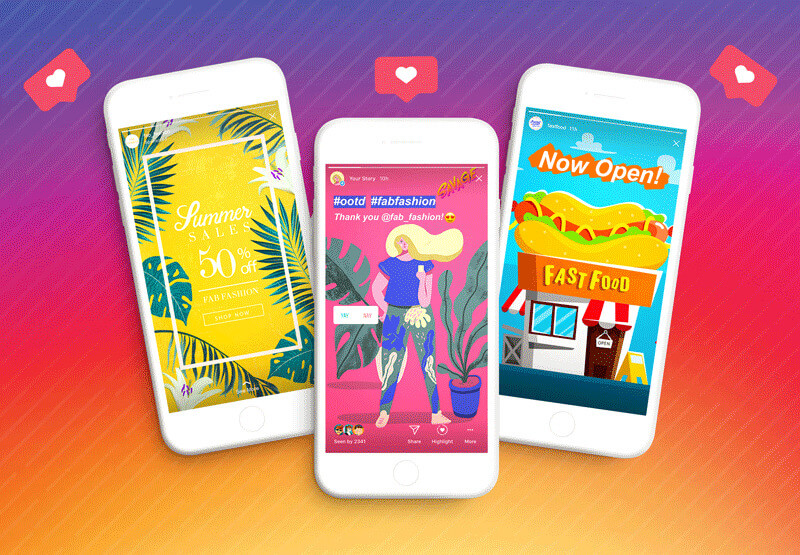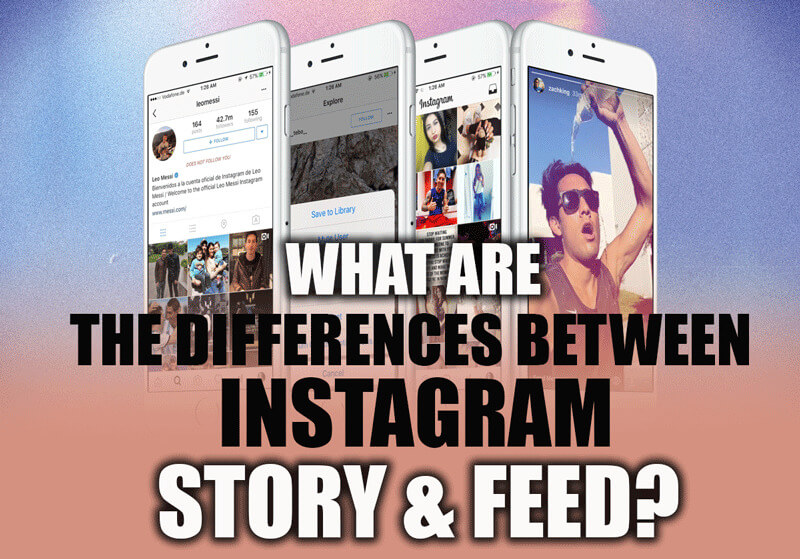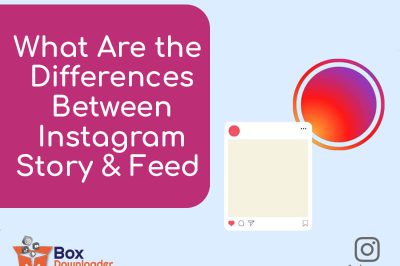With the rise of platforms like Instagram, I am constantly connected to the world.
Instagram has become the go-to platform for sharing visual content, and the app’s popularity has led to the introduction of several features, such as Instagram Story and Feed.
While both Story and Feed serve the same purpose of sharing content, they differ in their format, duration, and engagement.
Understanding the difference between Instagram stories and feed is crucial for anyone looking to make the most of their Instagram experience, whether for personal use or for growing a brand or business.
The following article will explore some key differences between Instagram stories and feeds.
+ 4 differences between Instagram story & feed
1. Format: How Story & feed differ in appearance
The format of Instagram Story and Feed is one of the most noticeable differences between the two features.
Instagram Feed is a standard format for sharing content, where users can upload a single photo or video at a time, along with a caption and relevant hashtags.
These posts appear in a grid format on a user’s profile and are visible to their followers.
In contrast, Instagram Story allows users to create a series of photos and videos that disappear after 24 hours.
The content is displayed in a full-screen format and is usually accompanied by stickers, emojis, and filters to make the content more engaging.
Users can also add links to their Stories, making it an effective tool for driving traffic to a website or blog.
Ultimately, the choice between Story and Feed format depends on the type of content and the user’s goals for their Instagram presence.
Don’t let Instagram stories disappear without a trace – discover how to download them on Android and keep them forever!
How to Download Instagram Stories on Android?
2. Duration: Understanding the time limits for Story & feed
Another significant difference between Instagram Stories and Feeds is their duration.
As mentioned, Instagram Story content disappears after 24 hours, while Feed content remains indefinitely visible on a user’s profile.
The temporary nature of Instagram Story encourages users to share more spontaneous and candid content that can be more varied and polished.
This feature is ideal for sharing short-term updates, behind-the-scenes glimpses, or time-sensitive promotions that are relevant for a limited period.
On the other hand, Instagram Feed is perfect for sharing evergreen content that doesn’t expire, such as product photos, brand messaging, or content that followers can revisit and enjoy over time.
It is also worth noting that Instagram allows users to create Story Highlights, saved versions of Stories that can be accessed on a user’s profile beyond the 24-hour time limit.
This feature allows users to curate their best Story content and showcase it permanently on their profile.

3. Content: What can you share on Story & Feed?
The type of content that can be shared on Instagram Story and Feed differs slightly, and it is essential to understand these differences to create effective content for each feature.
Instagram Feed is ideal for sharing more permanent content relevant to a user’s brand or profile.
This content can include high-quality images, videos, and carousels that showcase products, events, or general brand messaging.
Captions and hashtags can also be added to the post, making it easier for followers to discover the content.
In contrast, Instagram Story is perfect for sharing casual and spontaneous content, such as behind-the-scenes glimpses, short-term promotions, and user-generated content.
Story content can include photos, videos, text overlays, and interactive elements such as polls, quizzes, and questions.
Instagram Story and Feed are also ideal for promoting blog posts, articles, or other content from a user’s website.
For example, a user can post a teaser image or video on their Story, encouraging followers to swipe up and read the full article on their website.
4. Engagement: How do users interact with the stories & feeds?
Instagram Story and Feed also differ in how users interact with the content.
Instagram Feed is a more passive way of consuming content, with users scrolling through their feeds to discover and engage with interesting posts.
Users can like, comment, or share posts, save them for later, or share them with others.
Differently, Instagram Story is a more interactive way of engaging with content.
Users can swipe up on a Story to visit a website, take a quiz, or answer a question. They can also reply to a Story with a message or emoji or share it with their followers.

Identifying when to use a story or feed
Instagram Story and Feed can be used in various ways, and understanding when to use each feature is crucial for creating a successful Instagram strategy.
One way to identify when to use Instagram Story is to consider the shared content I mentioned earlier.
Another way to identify when to use Instagram Story or Feed is to consider the user’s goals for their Instagram presence.
For example, Instagram Feed may be the best option if the goal is to establish a consistent brand presence.
Instagram Story may be more suitable i
f the goal is to provide followers with a more authentic and personal experience of the user’s brand or profile.

Summing up
Instagram Story and Feed offer unique opportunities for users to share content and engage with their audience.
While both features differ in appearance, duration, content, engagement, and purpose, understanding these differences between Instagram stories and feed is crucial for tailoring content that resonates with the user’s audience and achieves their goals for their Instagram presence.
Whether it is to establish a consistent brand presence, drive engagement, or provide followers with a more authentic and personal experience, both Instagram Story and Feed have their place in a successful Instagram strategy.
As you consider your Instagram presence, ask yourself: which feature(s) align with your goals and the type of content you want to share with your audience?








Leave a Reply